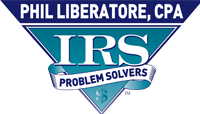
New IRS Rule Will Help Lower Drug Costs
Life may get a bit easier for millions of Americans with chronic medical conditions who struggle to pay for their medical care.
The IRS recently released formal guidance that allows insurers who sponsor high-deductible health plans (HDHPs) linked to health savings accounts (HSAs) to cover 14 essential services used to treat chronic diseases like diabetes and asthma before patients hit their deductibles.
That’s a big, welcome change. Previously, insurance coverage did not kick in until most patients spent over a thousand dollars out of pocket. That’s right: While in the deductible phase, many people pay the full “retail” price for critically important—and often predictable—medical services.
Since up to 40% of Americans can’t afford an unexpected $400 bill, many people don’t visit their clinicians and stop filling their prescriptions for insulin, inhalers, statins and other common drugs that keep patients healthy and prevent expensive hospitalizations and surgeries.
By reducing out-of-pocket drug costs, this reform will make critical medications more accessible. That’ll improve health outcomes for millions of patients—and potentially reduce overall healthcare spending. Let’s hope insurers embrace this change so that chronic disease patients never have to pay full price for lifesaving medicines ever again.
HDHPs have become increasingly popular in recent years. It’s easy to see why. They offer lower premiums than traditional coverage by shifting costs to those who use medical care. And they enable consumers to open HSAs, a type of tax-advantaged savings and investment account.
By 2017, 25% of working-age adults with employer-sponsored coverage were enrolled in high-deductible plans, up from just 4% in 2007.
However, these plans don’t work well for many Americans with chronic diseases.
The plans subject patients to steep out of-pocket-costs, in addition to premiums. By law, enrollees must pay a minimum of $1,350 out-of-pocket before insurers step in to help. Some plans set deductibles even higher. This year, plans can require individuals to pay a maximum of $6,750 in out-of-pocket costs.
There’s an exception to this rule. Insurers can pay for “preventive” care before patients reach their deductibles, but until recently, preventive was narrowly defined. It included services such as flu shots or cancer screenings, but explicitly left out chronic disease treatments.
The new IRS guidance expanding what is considered preventive makes sense. For patients with chronic disease conditions, drugs and diagnostic tests are truly preventive. For instance, insulin can help diabetes patients avoid serious—and expensive—complications, including blindness and amputation.
Chronic disease patients enrolled in high-deductible plans could see their prescription expenses drop substantially. That’s welcome news, given the rising healthcare costs. Consider that between 2012 and 2016, patients with Type 1 diabetes saw their annual insulin costs nearly double to $5,700.
Patients who face high out-of-pocket costs often deviate from their doctor’s orders. Nearly a third of patients said they didn’t take their medicines as prescribed in the last year because of cost. Prescription non-adherence results in 125,000 deaths and costs our healthcare system up to $289 billion annually.
Each year, more and more Americans enroll in high-deductible plans. The new IRS guidance will help reduce non-adherence, improve health and potentially lower medical spending.
(Source: https://www.fiercehealthcare.com/payer/industry-voices-new-irs-rule-will-help-lower-drug-costs-for-those-chronic-conditions)

